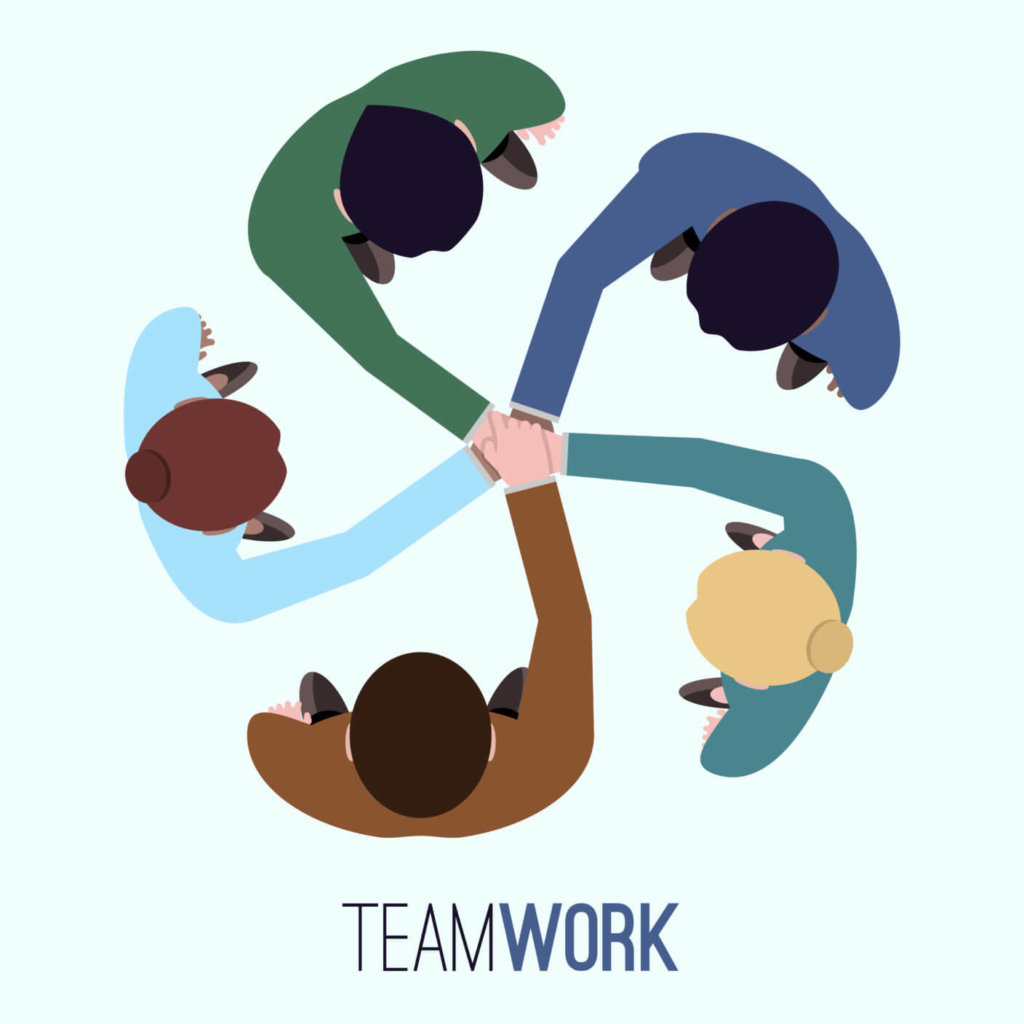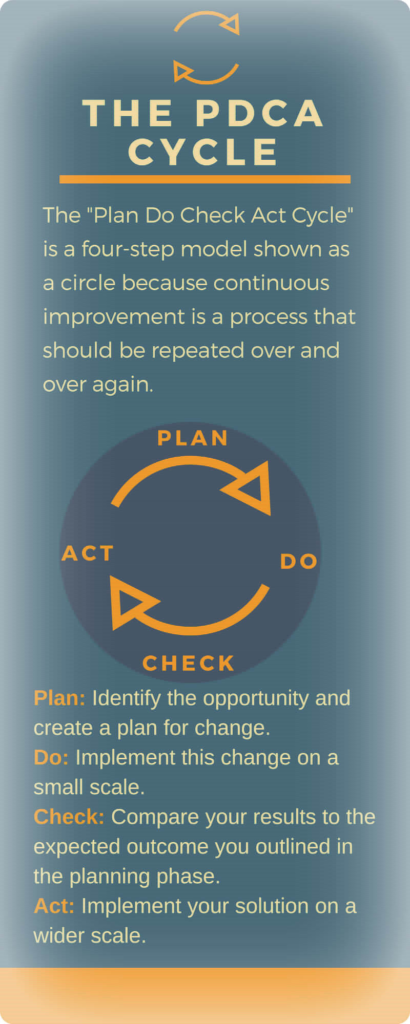Continuous Improvement is a Concept That Helps Companies
To truly get ahead of your competition, your business processes should be operating at maximum efficiency. After all, process efficiency can be a major influence on company productivity, profits, and agility. The best way to achieve this is through Continuous Improvement.
What, Exactly, is Continuous Improvement?

Continuous improvement is, as the name suggests, a practice of constantly re-examining and improving processes. At a glance, the whole concept might seem a bit of a buzzword. You keep hearing the word thrown around, but no one really mentions what it involvesdoing. And as we all know, the theory doesn't get you too far in the business world.
All the confusion with continuous improvement is because it's not something that you "do." Rather, it's a way a company operates. Adopting continuous improvement in a company means two things…
- Focus on Growth – The company should have an ongoing focus on incrementally improving their processes, services or products. Meaning, perfecting the way you do things on-the-go instead of carrying out one-off change initiatives.
- Creating a Culture of Improvement – More often than not, it's the employee on the shop floor who's an expert on company processes, not the management. Continuous improvement should be the responsibility of everyone in the company (not just for the process improvement team).
If you're familiar with other process management terms, you're probably wondering how they're all interconnected. Here's how they're related…
- Business Process Management (BPM) – A methodology of process re-evaluation and improvement. More or less the same thing as continuous improvement. The minor difference is that continuous improvement is more of a "philosophy" that a company should be based on, while BPM is a concrete set of tools and techniques. You can use BPM as a means of creating a culture of continuous improvement, but it doesn't necessarily work the other way around.
- Business Process Improvement (BPI) – The act of analyzing, streamlining and improving a single process. Continuous improvement means carrying out a BPI initiative whenever there's need for it.
- Business Process Reengineering (BPR) – Rather than improve an existing process, you re-create it using a new technology or methodology.
What is Tallyfy?
Tallyfy helps you document and automate tasks between co-workers and clients
Click here to learn about Tallyfy
Benefits of Adopting Continuous Improvement
Continuous improvement processes allow businesses to uncover problems and find ways to fix them. Small, positive changes made over time can dramatically impact a business's overall process. Here are a few ways continuous improvement can benefit your business over time:
Increased Productivity & Profits
By incrementally improving processes, your business will start seeing a much higher product per input. This, as a given, makes your entire organization more efficient, which finally translates into higher profits.
Employee Morale and Accountability
Oftentimes, your employees can have a lot of ideas on how to improve processes or products. A rigid organizational structure, however, can shut them down and kill their motivation.
In a company with the culture of continuous improvement, on the other hand, every employee is key to organizational growth. Allowing your employees to walk the extra mile and actually contribute to progress makes them feel valued, increasing overall morale and accountability.
Greater Agility
An organization has to be changing at all times to keep up with the competition. If your employees are used to change on a regular basis, they won't be phased during times of crisis and change.
How Continuous Improvement Works
Getting your company used to continuous improvement isn't easy. You can't just go up to your employees one day and tell them "the company will function differently from here on out." Making any kind of change in an organization is hard, and this is especially true if you're doing something so major.
But of course, you need to start somewhere. First things first, you'll need to let your management know about the initiative. Meaning, any suggestions on improving company processes will be welcomed by the management.
Then, you'll need to allow for the establishment of business process improvement initiatives. Once someone suggests a plausible way to improve a process, you'll need to assign an individual or team (depends on skills needed to change the process) in charge or improving it.
To help get this right, you can use tried-and-tested continuous improvement tools to move things forward…
Kaizen
Kaizen is a Japanese word that means "change for the better." The methodology was first used during the World War 2 by Japanese businessmen, eventually spreading around the world.
Masaaki Imai, a Japanese management consultant helped spread awareness of the Kaizen methodology in his book, Kaizen: The Key to Japan's Competetive Success. To establish a culture of continuous improvement, he recommends using 2 types of processes: Quality Teams and Kaizen Corners.
The first is a team of experts specializing in process improvement through statistical tools and software. They're for the type of improvements that you need expertise on and not something the average joe can just suggest.
Kaizen Corners, on the other hand, is a place where every single employee can hand in suggestions on how to improve processes. Masaaki recommends splitting the implementation of a Kaizen Corner into three stages…
- Stage One – All suggestions made by employees are considered and implemented. This is to show the team that everyone's input will be valued.
- Stage Two – Employees are trained on how to properly analyze current processes and make better suggestions.
- Stage Three – Offer an economic incentive for employees to contribute towards process improvements.
Once you have enough suggestions, you can start improving the processes.
There's a lot more to Kaizen than simply setting up Kaizen corners. Learn everything you need to know about implementing Kaizen with our guide.
The PDCA Cycle
One of the most popular process improvement tools is the "Plan Do Check Act" cycle (PDCA). This cycle is often credited to Dr. William Edwards Deming and Walter Shewhart. This four-step model is often shown as a circle because continuous improvement is a process that should be repeated over and over again.
Here is a closer look at each of the steps of the PDCA Cycle and what they involve:
- Plan
In this first part of the cycle, you will identify the opportunity present and create a plan for improvement. You can begin by defining the problem, outlining the opportunity present, brainstorming ideas, and developing a plan. You should also state what your desired outcome is once your problem is resolved.
- Do
Now that you have identified a possible solution you need to implement this plan on a smaller scale. This will allow you to test your solution and figure out whether your changes achieved your desired outcome. Testing your solution in this way will be a good way to see if it works or not without making any major disruptions.
- Check
During this stage, you will compare your results to the expected outcome you outlined in the planning phase. If your expected outcome was not achieved you should start the cycle over again. If it does work you can continue to the fourth stage of the cycle.
- Act
During the final stage, you will implement your solution on a wider scale. However, keep in mind that PDCA isn't a one-time initiative. Whenever there's an opportunity for improvement within the company, you'll need to repeat the process.
Want to learn more about each stage of PDCA? Check out our guide on implementing the methodology.
Conclusion
Even if your business is doing phenomenally now, that isn't destined to last forever.
A changing economy, new technology, budget concerns, and staff shortages are all dynamics that will eventually force you to make adjustments. An organization that embraces continuous improvements will be able to act on these changes and stay on course. A rigid, authoritarian company, on the other hand, will not.
If you need help creating a culture of continuous improvement in your company, workflow management software can help. Telling your employees that they're going to be doing something differently is one thing, enforcing it is something completely different. Tallyfy can digitize your processes, create changes and track them from start to finish.
Source: https://tallyfy.com/guides/continuous-improvement/
0 Response to "Continuous Improvement is a Concept That Helps Companies"
Enviar um comentário